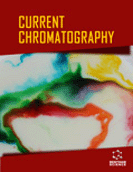Abstract
Background: Motion of the two mutually immiscible liquids in hydrodynamic countercurrent chromatographic systems is speculated based on the observation of their behavior in a closed coiled tube rotating in unit gravity.
Materials and Methods: The experiment revealed an up and down pattern of four stages of twophase volume ratio occupied at the head end of the coil according to the rotation speed. These two-phase behaviors are comprehensively explained on the bases of interplay between the unit gravity and centrifugal force generated by rotation of the coil. This theory is successfully extended to explain the two-phase behavior in a coil undergoing the type-I and type-J planetary motions. Results and Discussion: The type-I planetary motion produces the centrifugal force distribution similar to that of slowly rotating coil in unit gravity (Stage I), where both phases competitively move toward the head of the coil. In contrast, the type-J planetary motion displays complex distribution patterns of centrifugal force according to the location of the coil on the holder hence the two-phase motion varies with the ß values. When ß is 0.5 – 0.75, the force pattern simulates that of the rotating coil in unit gravity at 120 rpm (Stage III) where the lighter phase moves toward the head leaving the heavier phase behind. Conclusion: This clearly demonstrates the importance of the proper choice of ß values in highspeed countercurrent chromatography utilizing the type-J planetary motion.Keywords: Archimedean screw effect, countercurrent chromatography, force distribution diagram, hydrodynamic CCC system, type-I planetary motion, type-J planetary motion.
[http://dx.doi.org/10.1126/science.167.3916.281] [PMID: 5409709]
[http://dx.doi.org/10.1126/science.169.3940.54] [PMID: 5447530]
[http://dx.doi.org/10.1038/326419a0] [PMID: 3561480]
[http://dx.doi.org/10.1080/10408348608085550]
[http://dx.doi.org/10.1080/01483919808068311]
[http://dx.doi.org/10.1093/chromsci/11.6.284] [PMID: 4708863]
[http://dx.doi.org/10.1080/10826079208016340]
[http://dx.doi.org/10.1081/JLC-100100486]
[http://dx.doi.org/10.1021/ac991423q] [PMID: 10939412]
[http://dx.doi.org/10.1038/212985a0] [PMID: 21090480]
[http://dx.doi.org/10.1016/j.chroma.2006.08.004] [PMID: 16920128]
[http://dx.doi.org/10.1016/S0021-9673(01)93220-0] [PMID: 2613778]
 23
23


















